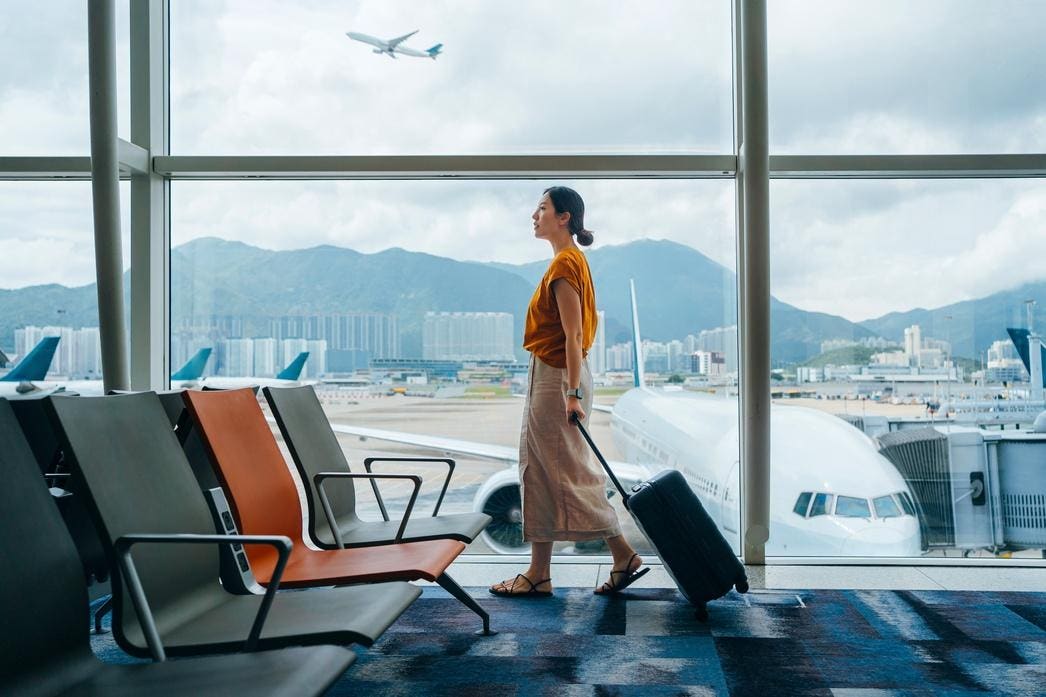Jeff Kim, CEO at Yanolja Cloud, is a transformative business leader at the forefront of technology, travel and digital innovation.
Tariffs have long influenced global trade, shaping economies and industries in unexpected ways. While much attention is often given to manufacturing and goods, the service economy, particularly the travel industry, is equally affected. Changes in exchange rates, prices, and supply chain structures can profoundly influence travel demand and pricing.
In the short term, a weakening U.S. dollar makes international travel more expensive for Americans, dampening demand for outbound trips. This creates an opportunity for domestic destinations to promote staycations and regional travel experiences. Meanwhile, inbound travel to the U.S. could see a boost, as a favorable exchange rate makes visits more affordable for international tourists.
However, countries facing adverse tariff policies may experience a decline in travel spending. Tariffs on aircraft, engines, and parts could escalate airline costs, leading to higher ticket prices during peak travel periods. Economic uncertainty might dampen global travel demand, causing ripples across the industry.
The travel industry has faced significant challenges recently. The Skift Travel 200 index, which tracks major travel companies, experienced a 5% drop following new tariffs, leading to a revised global travel industry growth forecast of 2%-5% for 2025, down from an earlier estimate of 6%-9%. Airline stocks have been particularly affected; the S&P 500 passenger airlines index has declined by approximately 15% this year, with major carriers like Delta and United seeing share price drops of about 20%.
A recent report by our company highlights the impact of President Trump’s Reciprocal Tariff policy on tourism, forecasting a 5% decline in international U.S. visitation in 2025, equating to an estimated $64 billion in lost tourism revenue. Rising anti-American sentiment in countries like Canada, China and parts of Europe may accelerate this shift, as travelers opt for regional alternatives over U.S. destinations.
In terms of travel between the U.S. and Canada, forward bookings for flights have plunged by as much as 75% compared to the same period in 2024, according to OAG, a global travel data provider. This decline is attributed to heightened geopolitical tensions and recent tariff implementations. However, destinations less affected by these trade measures—such as Brazil, Argentina, Colombia, Peru and Chile—may benefit from a reorientation of travel flows as travelers seek alternative destinations.
The Balloon Effect
Amidst this complexity and uncertainty, the concept of the “balloon effect” in the travel industry becomes crucial. This phenomenon, drawn from economics, refers to how pressure on one part of a system causes another part to expand, like squeezing a balloon. In travel, this means that while some destinations or sectors contract, others expand to absorb demand.
Technological advancements and the desire for improved quality of life have led to a decrease in working hours, fueling steady growth in the global travel market. The balloon effect suggests that when pressure is applied to one side of the market, it doesn’t shrink; instead, another side inflates. This highlights the resilience and adaptability of the travel industry.
Tariffs’ Impact On The Travel Sector
• Fleet Management Strategies: Tariffs on aircraft parts have caused airlines to reconsider their fleet management strategies. Airlines are adopting lower-cost or deferred maintenance strategies, delaying fleet upgrades to mitigate increased costs. Older aircraft may remain in service longer, affecting fuel efficiency and maintenance schedules. Airlines counterbalance this by investing in more efficient maintenance practices and optimizing operations.
• Innovative Marketing Campaigns: Destinations less affected by tariffs have implemented marketing campaigns to attract travelers from impacted regions. These campaigns often emphasize unique cultural experiences, local cuisine and adventure activities that offer great value for money. Countries like Peru promote their rich cultural heritage and diverse landscapes, offering travelers a unique experience that is both cost-effective and memorable.
• Business Travel Adjustments: Tariffs are also impacting business travel. Companies facing tariff-related cost pressures may reduce travel budgets or shift to regional meetings and virtual events. According to our research, protectionist trade policies are pushing business travelers to reconsider their itineraries, opting for domestic or regional meetings to avoid additional costs. This shift reflects a broader trend toward regionalization in global mobility, impacting airlines’ premium services. Airlines could potentially respond by enhancing virtual meeting capabilities or offering hybrid travel packages, providing flexibility and cost savings for businesses.
• Tech-Driven Solutions: Technological advancements play a pivotal role in helping businesses navigate tariff-related challenges. AI-driven analytics offer insights into traveler behavior and preferences, enabling companies to tailor offerings more effectively. Automation tools streamline operations and reduce overhead costs, allowing businesses to stay competitive despite price hikes. Generative AI powers virtual concierges, dynamic itineraries and real-time traveler support, keeping companies ahead of the curve.
• Strategic Partnerships: It’s also worth noting that partnerships between travel companies and local governments can spark initiatives benefiting both sectors. Governments may offer tax incentives to attract tourists, while travel companies promote local attractions. These collaborations can enhance destination appeal and drive tourism growth, even amid tariff uncertainties. Governments may invest in infrastructure improvements, while travel companies highlight these developments in their marketing.
Embrace The Dynamic
While tariffs present challenges, they also create opportunities for innovation and strategic adaptation. As noted by Yanolja Research, success in this new era will depend on adaptability, cross-border coordination, and a clear understanding of the economic and diplomatic factors shaping traveler behavior. In a global market marked by shifting alliances and economic nationalism, tourism leaders must develop strategies that are not only strategic but also resilient to policy shocks.
By leveraging technology, diversifying offerings, enhancing marketing efforts, optimizing pricing strategies and fostering partnerships, businesses can turn these challenges into opportunities for growth. The resilience of the travel market, driven by technological advancements and the desire for better quality of life, ensures that even when one side contracts, another expands. Adapt strategically, embrace the dynamic and ride the wave of disruption toward new growth.
Forbes Technology Council is an invitation-only community for world-class CIOs, CTOs and technology executives. Do I qualify?









